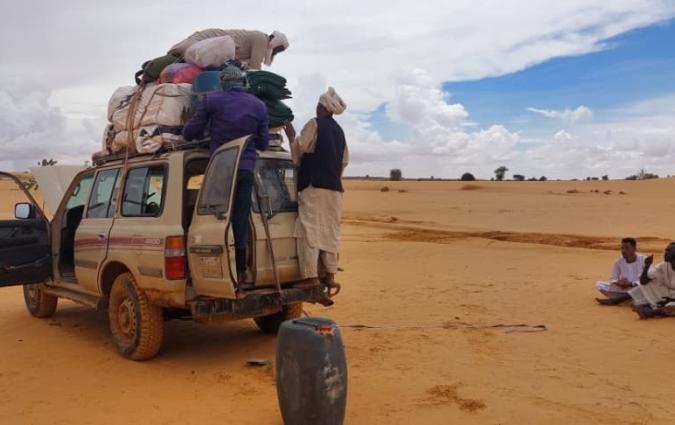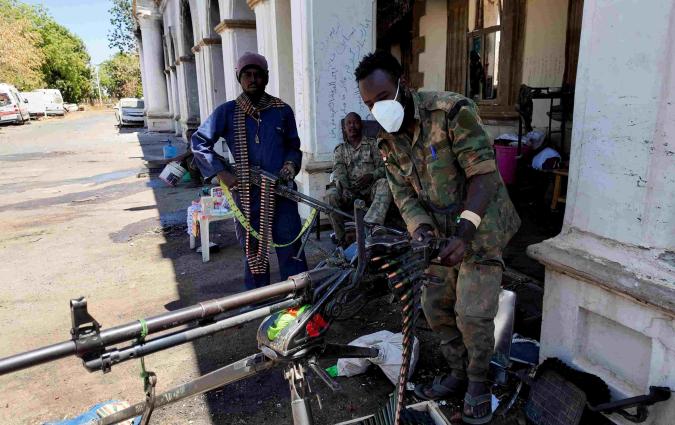This nonprofit is using virtual reality to train Ukrainian journalists to cover the war safely
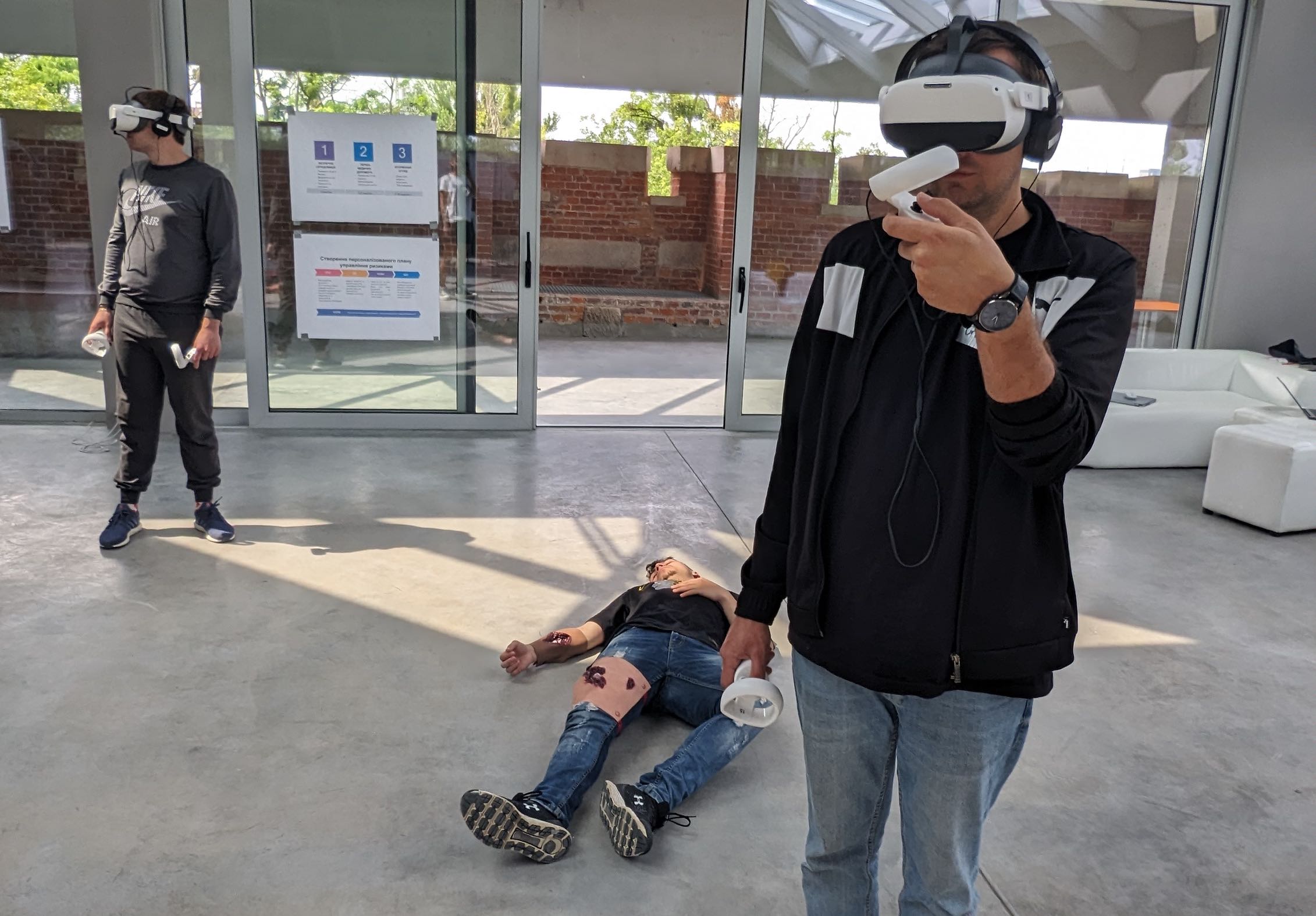
Several Ukrainian journalists take part at a training programme organised by the 2402 Foundation. | Credit: 2402 Foundation
Before February 2022, Halyna Yakushko was a lifestyle correspondent for a daily show at Ukrainian broadcaster 1+1. “I was doing reports about fashion, Eurovision and celebrities. I had never been in a conflict zone before,” she says.
Yakushko is now a freelancer working with regional, national and international broadcasters, including Radio Liberty, BBC Ukraine and CBC. In early 2023, for example, she was in Bakhmut, covering a city that at the time was surrounded by Russian forces.
The full-scale invasion of Ukraine turned journalists like Yakushko into war reporters overnight. Business journalists, culture correspondents and magazine photographers have found themselves reporting from the frontline or covering conflict.
From the beginning of the full-scale invasion to 25 July 2023, at least 69 media workers had been killed in Ukraine, including 44 Ukrainians, according to the National Union of Journalists of Ukraine. This figure is higher than the 17 counted by the Committee to Protect Journalists (CPJ) as it includes journalists who had joined the armed forces, and not only those killed just while doing their job. Dozens more have been reported injured during the war.
In this dangerous environment, delivering safety training for journalists, many of whom have no conflict experience, is an ongoing challenge and one that the support and training non-profit 2402 Foundation is trying to meet with the help of cutting-edge, virtual reality scenarios.
Where the idea came from
The 2402 Foundation was set up following the full-scale invasion by Katerina Sergatskova and Roman Stepanovych, veteran war correspondents and co-founders of independent Ukrainian newsroom Zaborona. The 2402 Foundation runs safety training initiatives for journalists working in Ukraine. It has also provided more than 400 journalists with vests and helmets, and more than 600 with individual first-aid kits (IFAKs).
“It was important for us to support other journalists who had never reported from a war zone before,” says Sergatskova. “I'm from Crimea and I became a war journalist because Russia invaded Crimea. My husband [Stepanovych] is from Donetsk and he became a war correspondent because Russia came to his hometown.”
Since its launch, almost 500 journalists have received training at the 2402 Foundation: “They now know how to assess their risks, how to mitigate them,” Sergatskova says.
With first-hand feedback coming from trainees who are reporting from the field in Ukraine and an ongoing war, the foundation is always seeking ways to improve their training. Sergatskova first encountered VR safety training at the 2022 annual meeting of the ACOS Alliance, a global network of more than 150 newsrooms and press freedom organisations working to promote safe and responsible journalism practices.
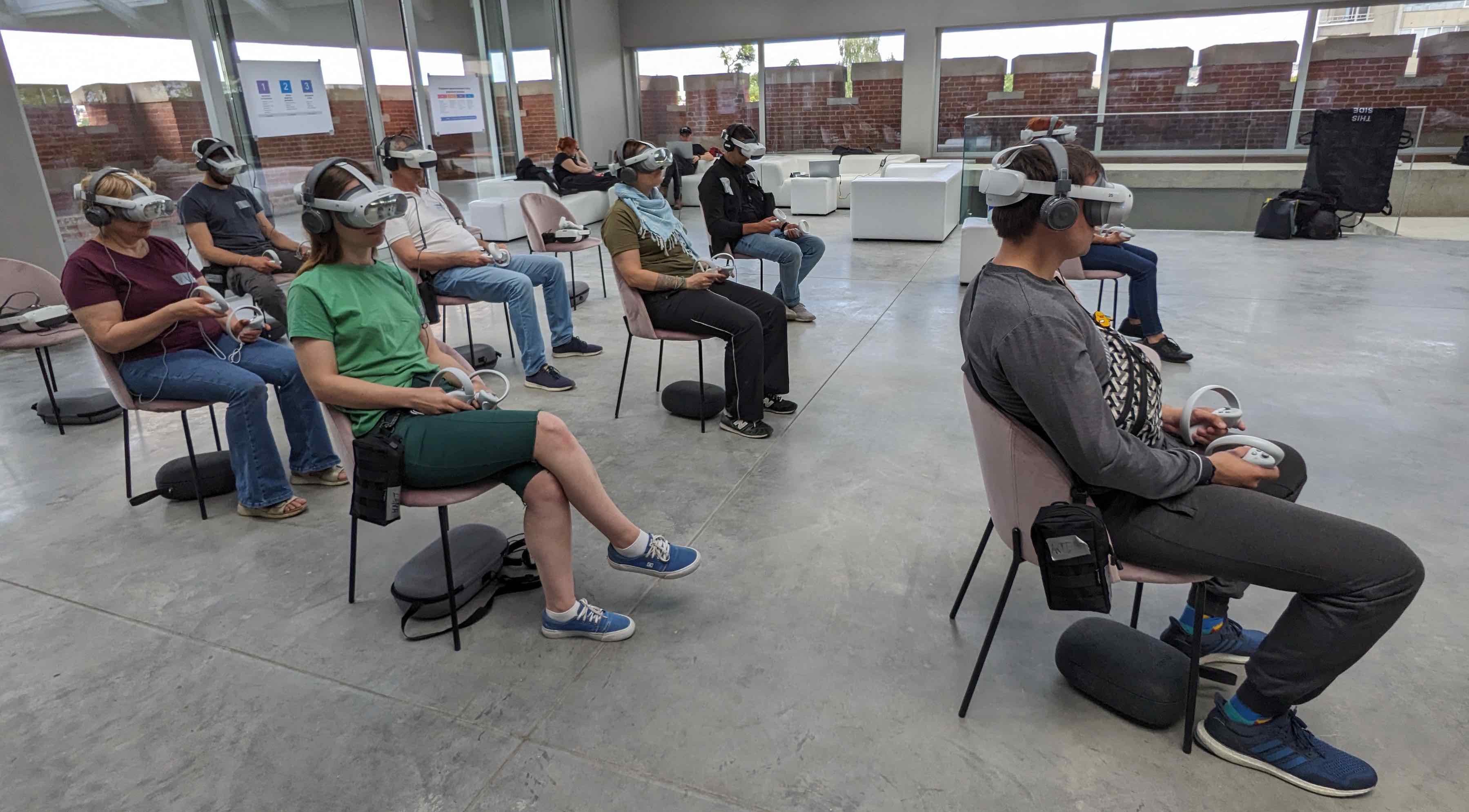
In June 2023, 40 journalists participated in its first HEFAT (Hostile Environment and First Aid Training) course using VR modules: one on reporting on civil unrest and the other on digital security. The three-day course took place in Lviv and blended theoretical, practical and first aid sessions with the VR modules.
The VR scenarios created and delivered by VR training company Head Set Immersive were 10 to 15 minutes long and were paired with non-virtual, classroom-based training, including on the “personalisation of risk”. “Threats and hazards are universal, but the risk to me is different to the risk for a journalist of colour or a transgender journalist, for example,” explains Head Set Immersive co-founder Kate Parkinson.
After the civil unrest scenario, trainees entered a role-play continuing the situation immediately after removing their headsets. Journalists working for Ukrainian newsrooms, such as Zaborona, Life in War and Ukrainer, took part alongside Ukrainian journalists who work for international media.
“There's really no other way you can interactively present [these topics] with such involvement,” says Sasha Maslov, a Ukrainian-American photojournalist who has worked for the New Yorker, the Washington Post and the New York Times, and who took part in the training. The VR brings the psychological aspect to the fore and is immersive, he explains, though it’s hard to fully recreate the pressure of explosions and yelling in an extreme situation.
What VR offers
The crucial advantage of VR is that it helps journalists better understand their psychosocial responses to situations. Being immersive, the scenarios elicit an emotional and physical response to the simulated situation, giving trainees a more realistic experience of the conditions under which they will have to make critical decisions.
“When you end up in an extreme situation, you can't think properly,” says Sergatskova. “In a virtual situation, you realise how you would feel and you can imagine the kind of decisions you will make. It works with your emotions.” It’s particularly good for highlighting things like stress triggers and stress-induced reactions, she explains.
Safety training often centres around situational awareness and identifying external threats and risks. All of this is important, says Parkinson, but journalists need to “look inside” too.
“What is your body telling you? Pay attention to that butterfly in your tummy, that sixth sense that something doesn’t feel right,” she says. “These are early warning signs that your body is preparing to shut down most of its functions to go into fight or flight mode.”
Recreating this experience without VR even before the full-scale invasion was difficult, she says. Reporting on civil unrest was common, especially in Kyiv. “But when you go there for the first time,” she says, “you don't know what to do. It's really difficult for an editor to explain to young journalists how to report on that. There are so many small things that you need to know before you go.”
Using the civil unrest VR scenario in Ukraine was an opportunity for journalists to pay attention to the physiological signs of stress and practice risk assessment in a situation they may not be familiar with, adds Parkinson.
The reporters behind the initiative
Head Set’s co-founders both have experience covering conflict and know that lessons from traditional safety training can disappear when you need them most. Parkinson was reporting as a freelance journalist from Libya when her cameraman (and now husband) was seriously injured by a rocket-propelled grenade. He was treated in the immediate aftermath by medics at a makeshift petrol station-turned-field hospital.
“When I saw him [with the medics], I froze and, in that moment, I did not remember a single thing that I had been taught,” says Parkinson. “Had it been up to me to save his life, I don't think I could have done it. Nothing had prepared me for the psychological impact of dealing with that. It was never mentioned in any of the training that I’d had.”
She began to question whether there was a better way to train journalists. The prevailing model is time-consuming and often involves staff journalists taking a week away from their work. If experienced journalists take refresher courses, there’s a danger of disengagement with the material too, she adds.
The immersive experience of the medium supports Head Set’s focus on prioritising mental health and resilience. Its training gives journalists tactics for dealing with acute stress and chronic, long-term exposure to stress.
“If they [trainees] don't have the resilience skills, then they don't remember the safety and security training and can’t re-engage their cognitive mind and regain the fine motor skills needed to put on a tourniquet,” says Parkinson. “They have to be aware of what's happening.”
From a practical point of view, delivering training using VR “demands your presence”, says Parkinson. Participants can’t look away or pick up their phone once a headset is on. “To the extent that you can stay in it,” she says, “it demands that you stay in it and that helps people focus their attention.”
VR can add new urgency to digital safety training, says Sergatskova. In this module, participants must make a series of choices about sensitive digital information and respond to security services seizing their devices. The outcome will be affected by the choices they’ve made along the way.
“You are experiencing the consequences of your choices on digital security,” says Sergatskova. “You see how it affects you, your family, your sources, your company.”
“Some answers lead to better outcomes, but there’s a series of increasingly bad endings,” adds Parkinson. “It was deliberately designed like that to give people a lived experience of the risks.”
Using VR for digital security training may not seem like an obvious choice, but it is emblematic of the Head Set’s approach. The firm says its earliest scenarios did not typically target frontline war reporters because this accounted for a relatively small number of journalists; rather, it wants to train those people working in hostile environments who might not realise it or not have had hostile environment training before. Journalists in the UK reporting on the Brexit referendum were an early test case.
The firm has designed training scenarios for reporting on extreme weather and natural disasters, in addition to its civil unrest and digital security modules.
How the VR is designed
When designing the VR scenarios, Head Set consults advisors from current and former partner organisations, journalists and field experts to build a composite story for the scenario.
It builds VR scenarios using the Unity game engine, through computer-generated graphics and imagery, rather than 360-degree video, that are more abstract in design. This approach evolved from designing Head Set’s first scenario in March 2020, which was audio-only owing to COVID-19 concerns. Test subjects were asked to shut their eyes and listen to the audio recording while Parkinson and her co-founder observed looking for signs of immersion and how their bodies reacted.
Engagement levels were maintained when minimal visuals were added but dropped when highly realistic visuals were tested. “The more real something looks, the less our brain believes it to be true,” says Parkinson. With more abstract visuals, the subject accepts what they are seeing and engages. “We found that there was a much higher level of engagement and acceptance, and therefore immersion, in the abstract,” she says.
Launching Head Set during the pandemic forced the company into finding ways to deliver VR equipment and training remotely. The benefit was that training could be made available anywhere with access to a video call and a headset. Participants can enter the virtual scenario from different remote locations too.
“It’s not a silver bullet [for safety training needs] because of the availability of hardware,” says Parkinson. “We’ve done training in challenging countries such as Armenia and Ukraine, but we’d struggle to get headsets into Afghanistan or Yemen for example.”
How trainees feel
Journalist and training participant Yakushko says attendees of the workshop were intrigued by the VR element and that it worked as an advert for the training: “It’s a new technology and we haven’t experienced it before.”
While she says she felt safe during the sessions, the VR scenario in which participants were detained and interrogated by authorities at an airport was a valuable learning experience. Yakushko says she initially found it easy to answer the questions posed but later learnt that her answers were “not perfect” and that there were more secure and safe ways to handle this situation. “It’s good that I made these mistakes in VR life and not in real life,” she says.
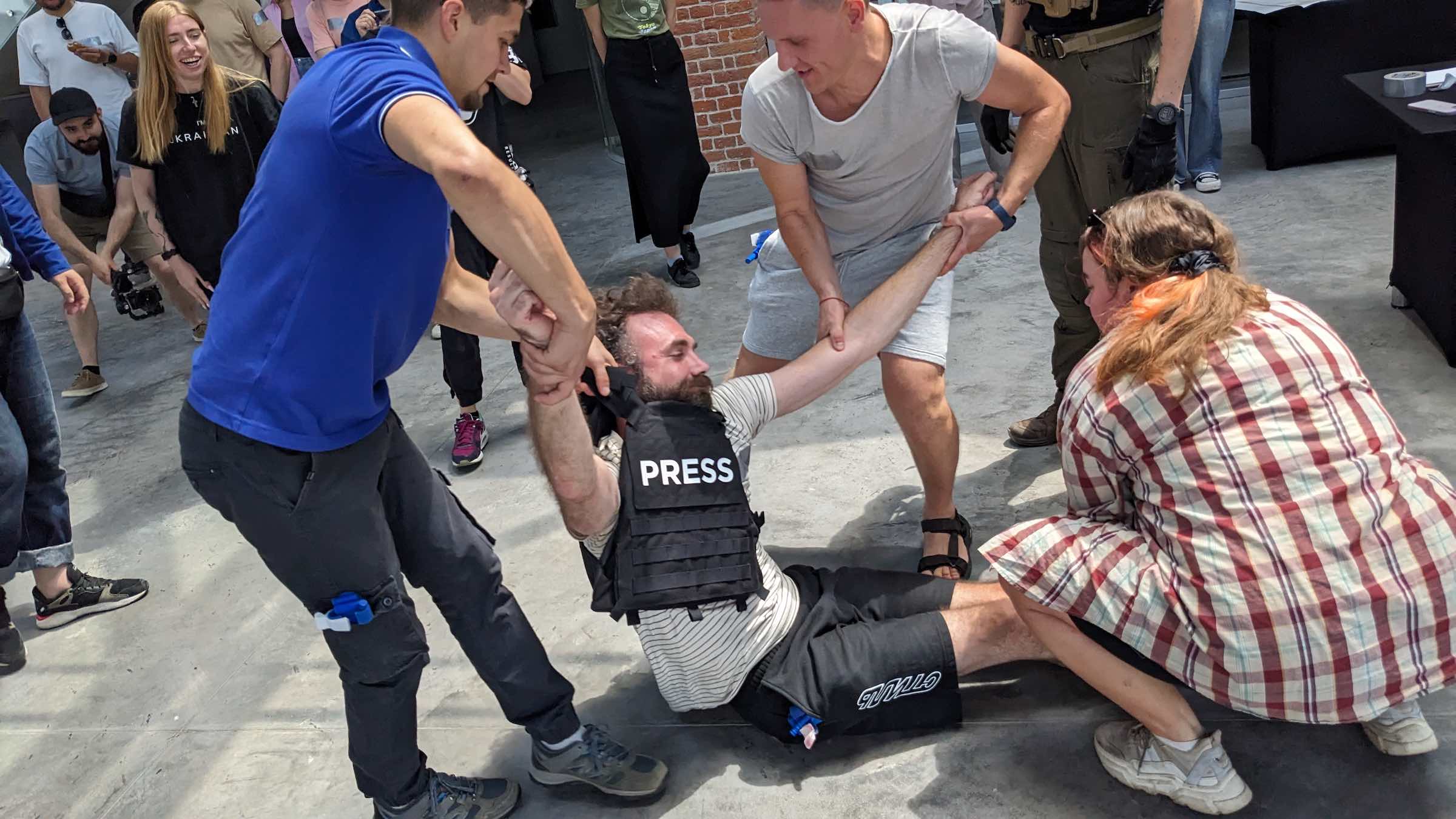
The 2402 workshop was Yakushko’s first experience of formal safety training, despite spending almost a year reporting from conflict areas. A security specialist in her team had provided instruction on applying bandages and tourniquets, but last year’s workshop was “training on a higher level”, she says. She is yet to deploy what she learnt, but is convinced it will be useful.
“I’m often in scenarios where someone is putting pressure on me, for example, when working with the military,” she says. “If they ask me to show them something [such as papers or source material], I’m prepared for that now. I feel more comfortable and I know the answers and how to react because it happened before in VR.”
Looking ahead
The strength of this training programme, says Sergatskova, comes from its comprehensive approach: it uses VR where appropriate but this is mixed with role-play, hands-on first aid skills, presentations and workshops.
By the end of the course, you can see participants’ progress: “You can be sure that they can go to the frontline and they will be safe,” she says. “The training can save lives: not only their lives but the lives of colleagues or other people in that situation.”
For journalists dealing with the specific type of warfare in Ukraine this training can be valuable, says Sergatskova: “It can be difficult to understand what to do during an attack: is it better to run or find shelter? One of the main questions from journalists in Ukraine is what to do during these attacks while driving your car.”
The 2402 Foundation plans to expand its work to non-journalists, such as NGO and non-profit workers in Ukraine. It has plans to work with Head Set in 2024, including on the joint development of VR and AR training scenarios and on a programme from March in partnership with the Digital Defenders Partnership, which supports human rights activists under threat.
“There are so many people who didn’t cover war before the full-scale invasion, but a lot of them have realised that this is their duty and they have to do it,” says Maslov, the Ukrainian-American photojournalist. “There are wedding photographers now doing frontline stuff and asking for equipment and training. I don't know what a lot of journalists in Ukraine would do without this fund.”
In every email we send you'll find original reporting, evidence-based insights, online seminars and readings curated from 100s of sources - all in 5 minutes.
- Twice a week
- More than 20,000 people receive it
- Unsubscribe any time



